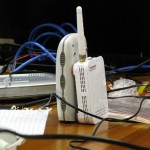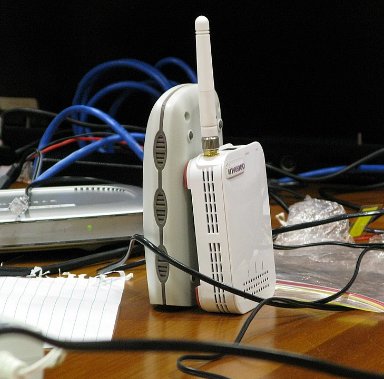I am childishly excited by the fact that the Village Telco actually has the first chunk of public code available in the form of a software build for OpenWRT running on an Ubiquity Nanostation 2. The source code is available via subversion on the Village Telco SourceForge site and Elektra has put instructions for its installation up on the Village Telco wiki.

So what does this mean for the Mesh Potato? Our challenge at the moment is to create a prototype of the Mesh Potato on which both functional and performance aspects of the Mesh Potato concept can be tested. In oversimplified terms, this consists of wiring a Wifi access point and an analogue to telephony adapator (ATA) together to functionally if not physically imitate the operation of the Mesh Potato. This will constitute a basic platform on which the Mesh Potato software can be developed and tested.
In the Village Telco workshop, we took the decision to develop the Mesh Potato using a similar chipset to the one used in the Ubiquiti Nanostation 2 and indeed in the OpenMesh Accton mini-APs. Both of these devices use an Atheros chipset which is gaining popularity in the wireless networking world as a being affordable, powerful, and developer friendly. So the Mesh Potato prototype will consist of a Nanostation 2 physically wired up to an ATA of some description.
The code referenced above is a version of OpenWRT adapted to run on the Nanostation 2. Next steps will including installing the speech compression/decompression software and the interface to the ATA. Then the actually performance testing can begin.
Assuming all of that goes well, the next phase begin to address the actual hardware design of the Mesh Potato.
